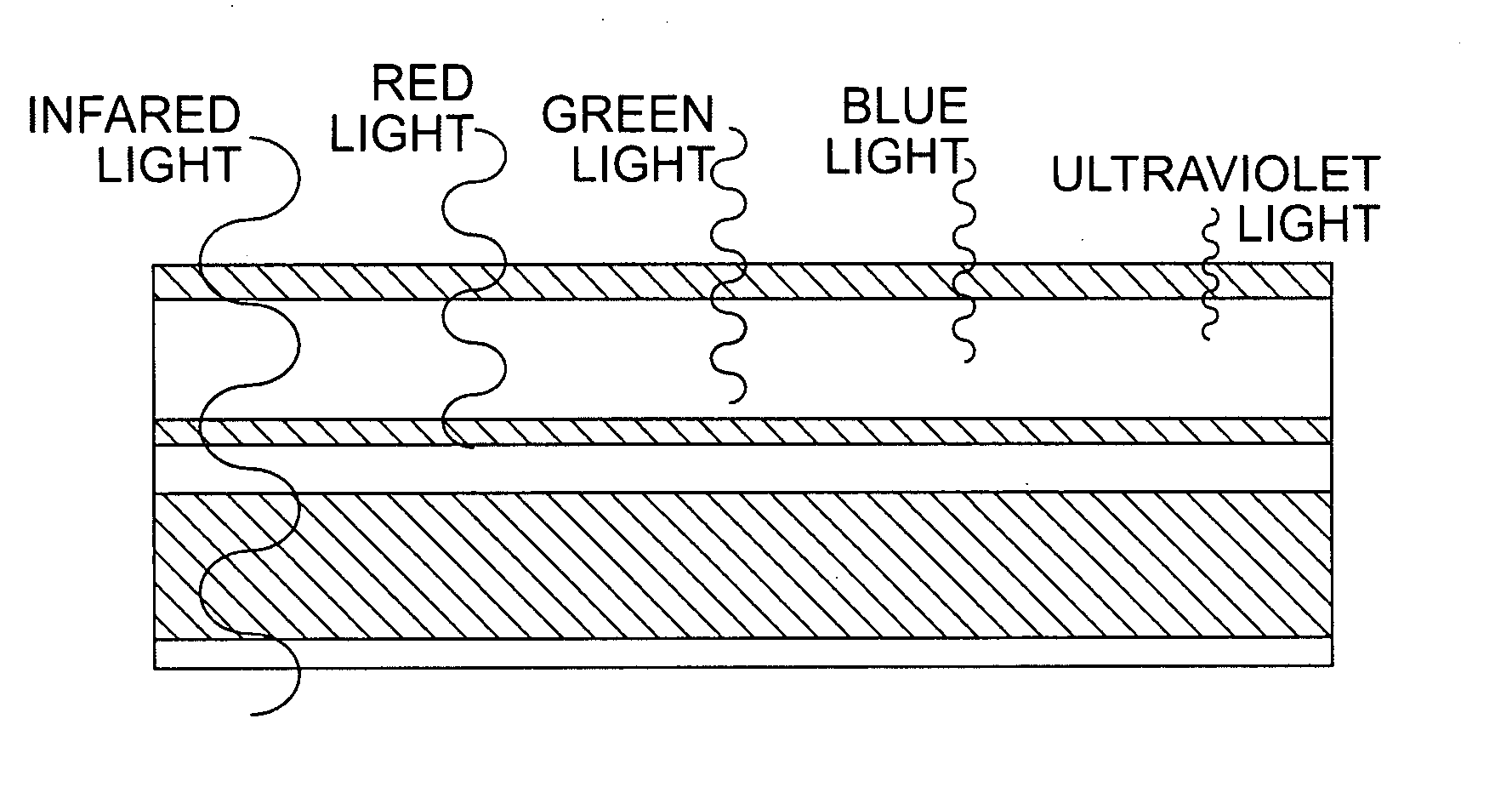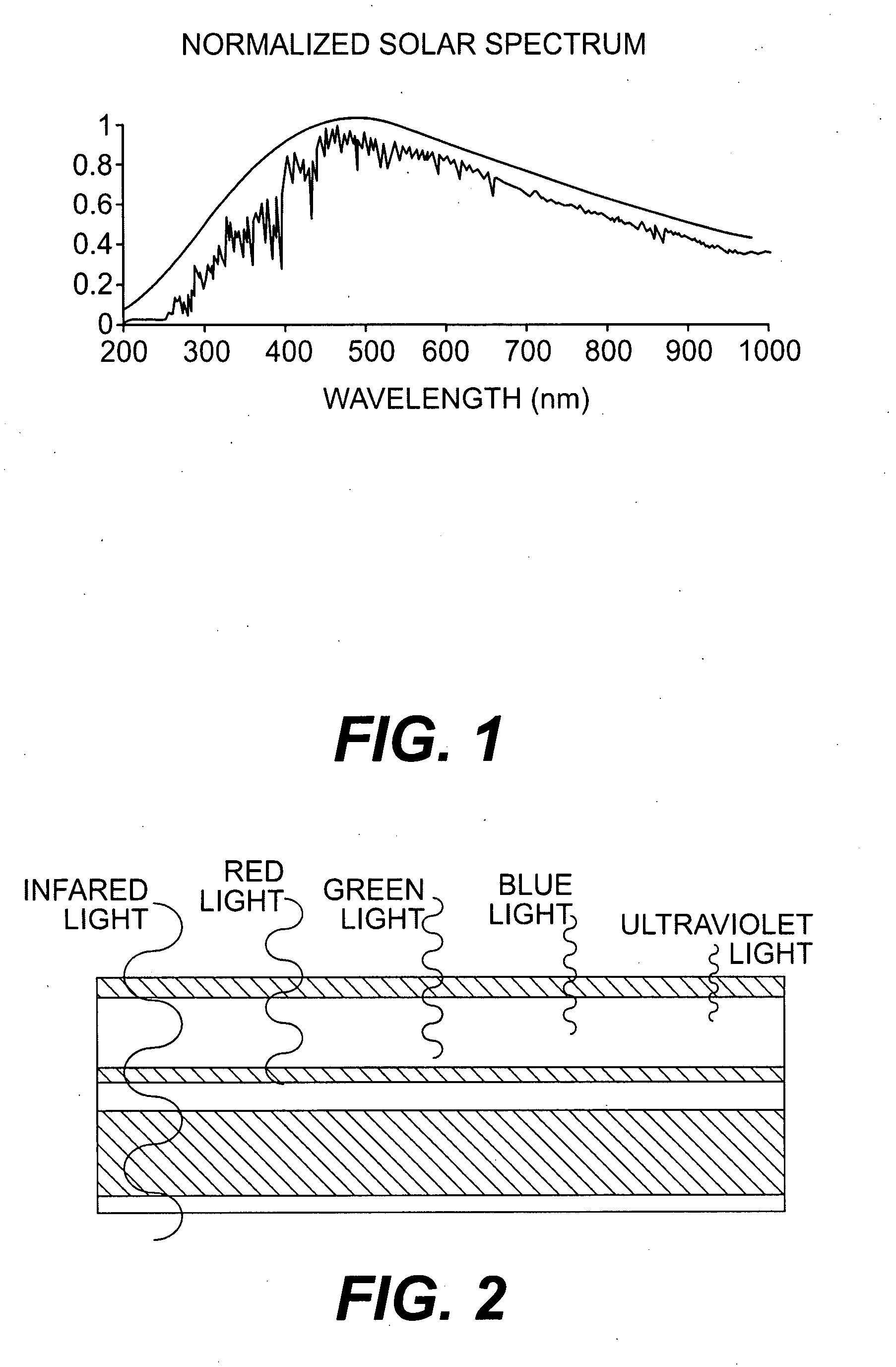Thinned solar cell
- Summary
- Abstract
- Description
- Claims
- Application Information
AI Technical Summary
Benefits of technology
Problems solved by technology
Method used
Image
Examples
Embodiment Construction
[0028]The “Thinned Solar Cell” invention described herein makes use of existing Si-based solar cells and increases the efficiency up to 90% or greater for peak absorption. The outer layer of silicon based solar cell can be reduced in thickness in order to bring the depletion region or p-n junction closer to the surface where desired photon absorption occurs. Photon absorption in this region converts incident photons into useable electrons in the form of electric current. The thickness of the outer layer of PV material can be reduced to within the diffusion depth of an incident photon. The thickness of the outer layer can be designed to maximize the spectral range of absorbed photons that contribute to useable electrical power.
[0029]FIG. 1 shows the relative amount of energy available from the sun over a broad spectral range from 200 nm to 1,100 nm. The majority of Ultra-Violet (UV) light below approximately 300 nm is absorbed by the earth's atmosphere. Near-Infrared (NIR) light beyo...
PUM
 Login to View More
Login to View More Abstract
Description
Claims
Application Information
 Login to View More
Login to View More - R&D
- Intellectual Property
- Life Sciences
- Materials
- Tech Scout
- Unparalleled Data Quality
- Higher Quality Content
- 60% Fewer Hallucinations
Browse by: Latest US Patents, China's latest patents, Technical Efficacy Thesaurus, Application Domain, Technology Topic, Popular Technical Reports.
© 2025 PatSnap. All rights reserved.Legal|Privacy policy|Modern Slavery Act Transparency Statement|Sitemap|About US| Contact US: help@patsnap.com


